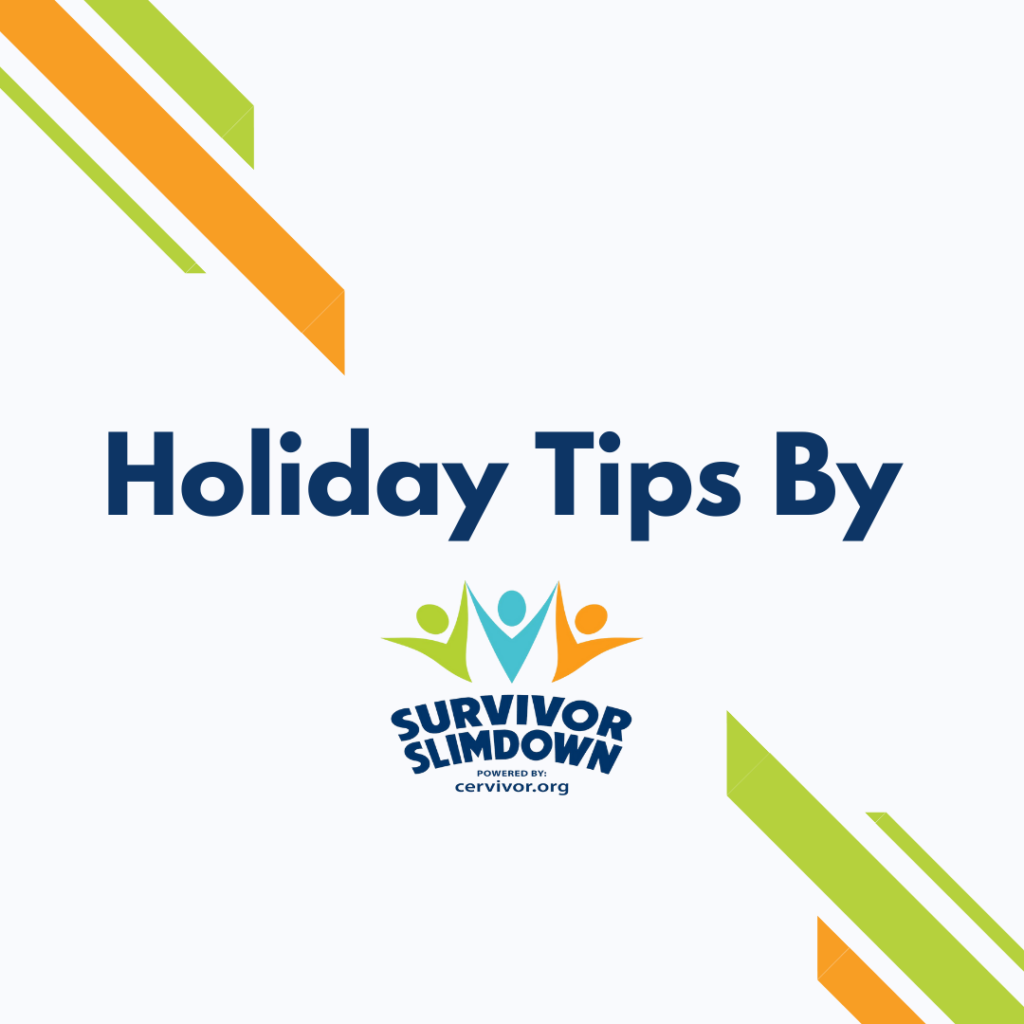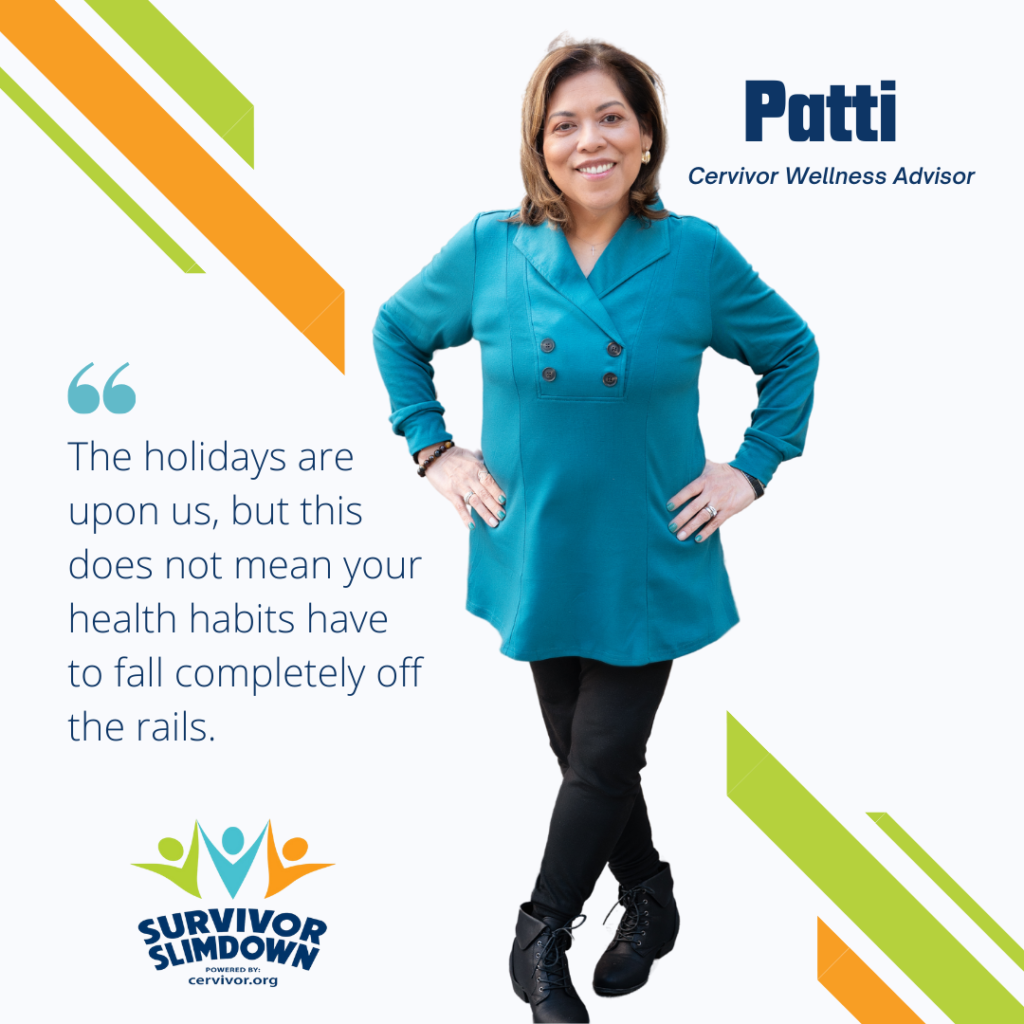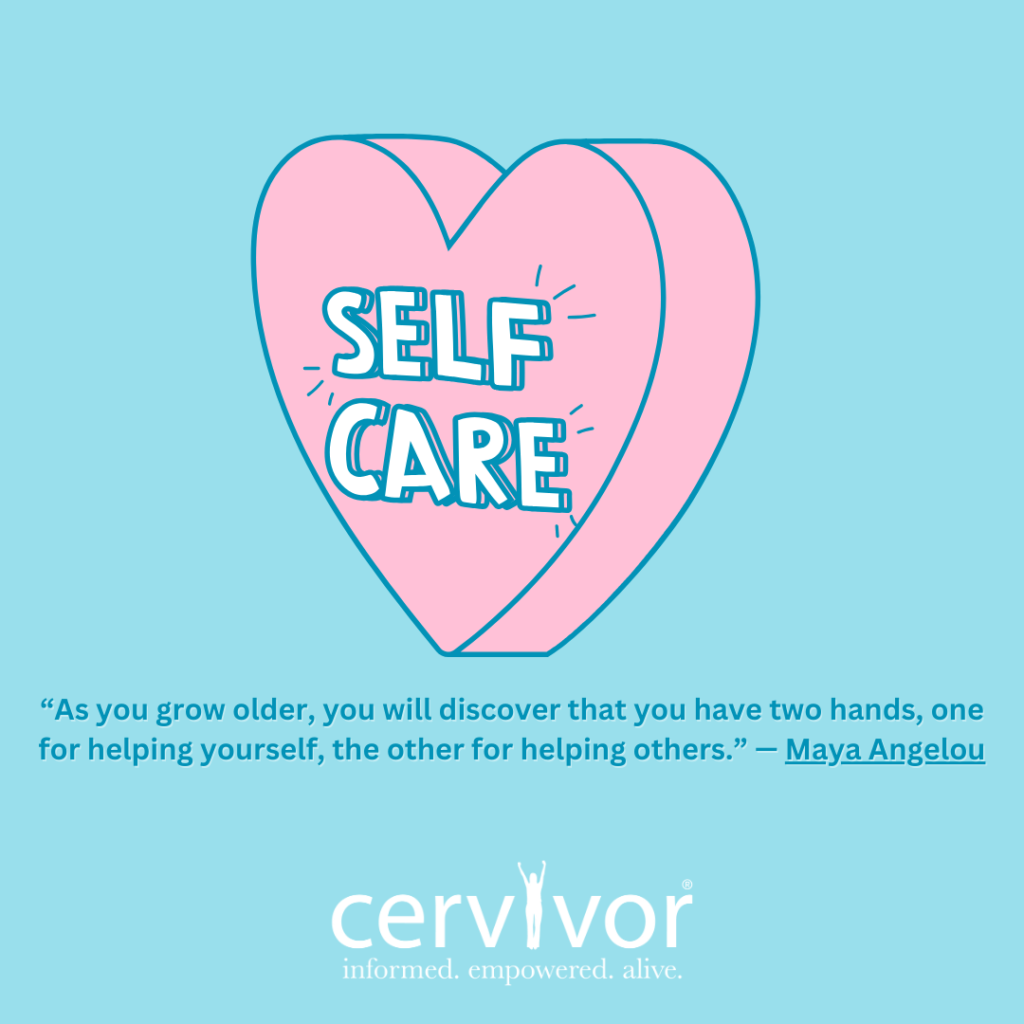The holidays are upon us, but this does not mean your health habits have to fall completely off the rails. We realize it is a season for family, friends, festivity, and food – lots of food. Temptations will be everywhere and this will disrupt your daily routines. Here are some tips and tricks that may help keep you on track:

Eating During the Holidays
Don’t Skip Meals. If you want to “party smart,” never starve yourself throughout the day thinking that it is going to help you save calories for the night. It is a big mistake to try to “save” calories by skipping meals before the event. This will lead to overeating and making poor food choices.
Stay Hydrated. Drink plenty of water during the day so you do not feel sluggish the next day. Staying hydrated not only helps maintain your water intake, but it can also reduce feelings of hunger.
Double Up on Veggies. This is always a great idea. Consider bringing a nutritious side dish to the gathering. This way, you can ensure there will be a healthy option available. For example, you could prepare Brussels Sprouts and sweet potatoes.
Back to Routine. Go back to regular eating after a big holiday meal. Sometimes people keep indulging after the event is over. Remember, one day will not make that much of a difference, but several days certainly will.
Drinking During the Holidays.
We understand that drinking might be part of the equation for holiday get-togethers. Here are tips that may help you not to overdo it, and pack in those empty calories.
Make Mindful Choices. Juices, soda, and alcoholic beverages are high in calories and sugar – especially those fancy cocktails. Go for low-calorie alcohol beverages and sip your drink slowly.
Drink Water Between Drinks. Alcohol is a diuretic so it is important to make sure that you stay hydrated by replacing the water that is lost when drinking alcohol. Drinking a glass of water before and between alcoholic drinks can help reduce the risks of dehydration.
Limit Yourself to 2 Drinks. The 2020-2025 Dietary Guidelines for Americans recommends drinking in moderation by limiting intake to two drinks or less.
Do not give in to peer pressure. Sometimes friends might make you feel obligated to keep on drinking to feel like you are part of the group, but do not give in. Remember you have goals that you want to reach.
Bonus Tips and Tricks
Make sure you are rested. The holidays can interrupt your sleep-wake cycle which affects your weight management goals. Get your sleep.
Avoid stress eating. Stress is one of the biggest triggers for overeating, especially during the holidays when there are so many tempting foods and sweets.
Practice self-care. Spend a few minutes each day by yourself. Take a walk, meditate, write in your journal, read a book, or even take a hot bath.
Move your body every day. Go for a long walk. Do a 20-30 minute workout or even dance a couple of songs. This will help your mindset and you will burn some extra calories. Your mind and body will thank you.

Staying on track does not mean you have to deprive yourself or feel guilty because you overindulge. It means just being aware and planning ahead. It does not need to be perfect Planning will help you stay focused during the holidays and to be ready for a brand new year.
Happy Holidays Everyone! Wishing you all good health for the upcoming 2024 year.
